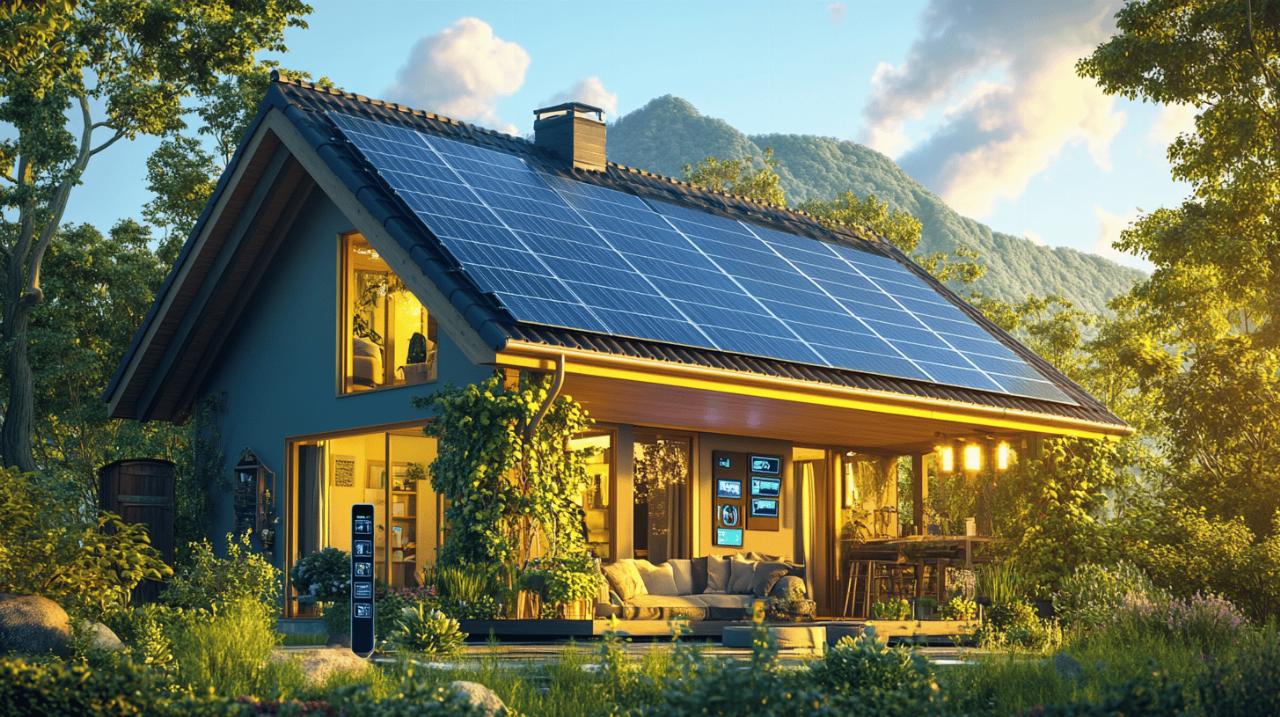As the cost of living continues to rise, finding ways to reduce energy consumption at home has become more important than ever. Improving your home’s energy efficiency not only helps lower utility bills but also reduces your carbon footprint. Fortunately, there are numerous DIY projects that homeowners can undertake without professional help, making energy-saving improvements accessible to everyone. These projects range from simple weekend tasks to more involved undertakings, all aimed at creating a more comfortable, efficient living space while reducing energy waste.
Window and door improvements
One of the most effective ways to boost your home’s energy efficiency is by addressing heat loss through windows and doors. According to recent studies, a significant portion of a home’s heat escapes through gaps around these openings. At Kamerolli Estate Agents, we’ve observed that homes with proper draught-proofing typically maintain more consistent indoor temperatures and require less energy for heating, making them more attractive to potential buyers and renters alike.
Installing draught excluders
Draught excluders are simple yet remarkably effective devices that prevent warm air from escaping your home during winter months. Professional draught-proofing might cost around £250, but the annual savings can reach £85 in Great Britain and £95 in Northern Ireland. For a budget-friendly alternative, you can create your own draught excluders using materials like foam tape, brush strips, or even fabric door snakes. Focus on areas where you can feel air movement such as the bottoms of doors, letterboxes, and window frames.
Fitting thermal curtains and blinds
Thermal curtains and blinds offer an additional layer of insulation for your windows, helping maintain indoor temperature regardless of external conditions. These specialised window treatments typically feature multiple layers of fabric with insulative materials sandwiched between them. When properly installed, thermal curtains can reduce heat loss through windows by up to 25%. For maximum effectiveness, ensure curtains extend beyond the window frame on all sides and consider using curtain tracks that sit close to the wall, minimising air circulation around the edges.
Insulation solutions
Proper insulation forms the foundation of an energy-efficient home, creating a thermal envelope that keeps heat in during winter and out during summer. Without adequate insulation, heating systems must work harder, consuming more energy and increasing utility bills unnecessarily.
Loft and attic insulation techniques
The roof represents a major area of heat loss in many homes. Adding insulation to your loft or attic is a relatively straightforward project that offers substantial returns on investment. The recommended depth for mineral wool insulation is 270mm, though many older homes have much less. Topping up existing insulation from the typical 120mm to the recommended 270mm can save approximately £20 annually in Great Britain and £25 in Northern Ireland. With loft insulation having a lifespan of around 40 years, this represents excellent value. The process involves laying insulation material between and across joists, ensuring even coverage while maintaining ventilation to prevent condensation issues.
Hot water tank insulation methods
Insulating your hot water cylinder is perhaps one of the quickest energy efficiency wins available. A properly fitted hot water tank jacket can pay for itself within a single year. These jackets should be at least 80mm thick for optimal performance and can be secured with tape or string. Additionally, consider insulating exposed hot water pipes with foam tube insulation, particularly in unheated spaces. This reduces heat loss as water travels through the system and helps water reach taps at higher temperatures, reducing the energy needed to achieve desired warmth.
Heating system optimisation
Your heating system is likely the largest energy consumer in your home. Making targeted improvements to how it operates can yield substantial energy and cost savings without sacrificing comfort.
Programmable thermostat installation
Installing a programmable thermostat gives you precise control over your home’s heating schedule, ensuring rooms are warm only when needed. Modern smart thermostats allow programming through smartphone apps and can learn your habits to optimise heating patterns automatically. Some systems even detect when the house is empty and adjust accordingly. Installation typically involves removing the old thermostat, connecting a few wires following manufacturer instructions, and mounting the new unit. While specific savings vary by household, programmable thermostats typically reduce heating bills by 10-15% when properly used.
Regular maintenance and servicing
Maintaining your heating system ensures it operates at peak efficiency. Simple tasks like bleeding radiators to remove trapped air, cleaning radiator surfaces, and keeping them unobstructed by furniture can significantly improve performance. For boiler systems, annual servicing is essential not just for efficiency but also for safety. Though this might require professional assistance, many maintenance tasks can be performed by homeowners. These include replacing filters in forced-air systems, clearing vents, and checking for leaks or unusual noises that might indicate developing problems.
Energy-efficient lighting
 Lighting accounts for approximately 15% of a typical household’s electricity bill, making it a prime target for efficiency improvements. Modern lighting technologies offer substantial energy savings with minimal investment.
Lighting accounts for approximately 15% of a typical household’s electricity bill, making it a prime target for efficiency improvements. Modern lighting technologies offer substantial energy savings with minimal investment.
Switching to led bulbs
LED lighting technology has revolutionised home energy efficiency. Replacing all traditional bulbs with energy-efficient LEDs can reduce carbon dioxide emissions by 35kg annually in both Great Britain and Northern Ireland while saving £45 per year on electricity bills in Great Britain and £50 in Northern Ireland. Though LEDs have a higher upfront cost than older bulb types, their dramatically longer lifespan and lower energy consumption make them far more economical in the long run. When selecting LED bulbs, consider the colour temperature based on the room’s purpose—warmer tones for living spaces and cooler tones for task-oriented areas.
Strategic placement for maximum efficiency
Beyond simply changing bulb types, strategic placement of lighting can further enhance efficiency. Consider task lighting that focuses illumination where needed rather than lighting entire rooms uniformly. Installing dimmer switches allows adjustment of light levels to suit different activities and times of day. For outdoor areas, motion sensors ensure lights operate only when needed. Additionally, maximising natural light through strategic furniture placement and using light-coloured wall finishes can reduce daytime lighting needs altogether.
Water conservation projects
Water heating typically represents the second-largest energy expense in homes after space heating. Reducing hot water usage directly translates to energy savings while also conserving this precious resource.
Aerating showerheads installation
Aerating showerheads mix air with water, creating the sensation of high pressure while actually using less water. Installation is usually as simple as unscrewing the old showerhead and attaching the new one, making this an ideal beginner DIY project. These devices can reduce water consumption by up to 50% without compromising shower experience. Taking four-minute showers can save the average home £45 annually in Great Britain and £65 in Northern Ireland. Simply swapping a weekly bath for a four-minute shower can save £10 annually in both regions.
Low-flow tap upgrades
Similar to showerheads, low-flow taps reduce water consumption by introducing air into the stream. Some models use clever design to direct water more efficiently rather than restricting flow. Installing tap aerators is extremely straightforward—they simply screw onto the end of most standard taps. For those comfortable with basic plumbing, replacing entire taps with newer low-flow models offers even greater efficiency. These upgrades are particularly effective in kitchens where hot water is frequently used for short durations.
Weatherproofing your home
Comprehensive weatherproofing addresses the numerous small gaps and cracks through which air escapes, collectively representing a significant source of energy waste in most homes.
Identifying and sealing air leaks
The first step in effective weatherproofing is identifying air leaks. On windy days, hold a lit incense stick near potential leak areas—windows, doors, electrical outlets, plumbing fixtures, and ceiling fixtures. Movement in the smoke indicates air infiltration. Caulking is the primary method for sealing small, stationary cracks around window and door frames, baseboards, and where different building materials meet. For larger gaps, expanding foam sealant provides effective insulation. Pay particular attention to areas where utility services enter the home, as these often create hidden air pathways.
External wall repair and maintenance
Maintaining exterior walls prevents moisture infiltration and preserves insulation effectiveness. Check for and repair cracked or missing mortar between bricks, damaged siding, and peeling exterior paint, all of which can allow moisture to penetrate walls and reduce their insulative properties. For homes with cavity walls, professional insulation can save approximately £240 annually in Great Britain and £270 in Northern Ireland. While cavity wall insulation typically requires professional installation, exterior maintenance can be accomplished through careful DIY work, protecting your home’s thermal envelope and extending the life of building materials.
